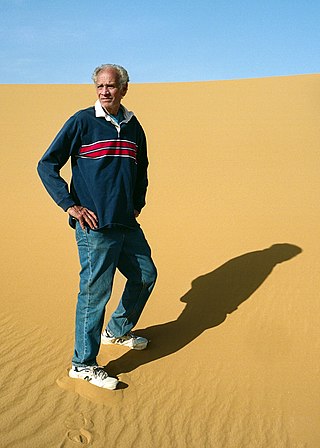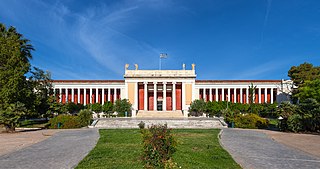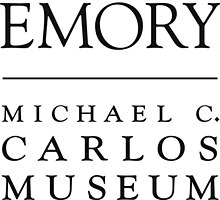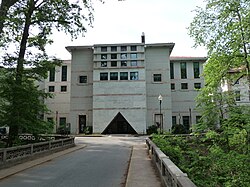
Egyptology is the scientific study of ancient Egypt. The topics studied include ancient Egyptian history, language, literature, religion, architecture and art from the 5th millennium BC until the end of its native religious practices in the 4th century AD.

Nefertiti was a queen of the 18th Dynasty of Ancient Egypt, the great royal wife of Pharaoh Akhenaten. Nefertiti and her husband were known for their radical overhaul of state religious policy, in which they promoted the earliest known form of monotheism, Atenism, centered on the sun disc and its direct connection to the royal household. With her husband, she reigned at what was arguably the wealthiest period of ancient Egyptian history. After her husband's death, some scholars believe that Nefertiti ruled briefly as the female king known by the throne name, Neferneferuaten and before the ascension of Tutankhamun, although this identification is a matter of ongoing debate. If Nefertiti did rule as Pharaoh, her reign was marked by the fall of Amarna and relocation of the capital back to the traditional city of Thebes.

Usermaatre Meryamun Ramesses III was the second Pharaoh of the Twentieth Dynasty in Ancient Egypt. Some scholars date his reign from 26 March 1186 to 15 April 1155 BC, and he considered to be the last great king of the New Kingdom.

Mummy portraits or Fayum mummy portraits are a type of naturalistic painted portrait on wooden boards attached to upper class mummies from Roman Egypt. They belong to the tradition of panel painting, one of the most highly regarded forms of art in the Classical world. The Fayum portraits are the only large body of art from that tradition to have survived. They were formerly, and incorrectly, called Coptic portraits.

Zahi Abass Hawass is an Egyptian archaeologist, Egyptologist, and former Minister of State for Antiquities Affairs, serving twice. He has also worked at archaeological sites in the Nile Delta, the Western Desert and the Upper Nile Valley.

Menpehtyre Ramesses I was the founding pharaoh of ancient Egypt's 19th Dynasty. The dates for his short reign are not completely known but the timeline of late 1292–1290 BC is frequently cited as well as 1295–1294 BC. While Ramesses I was the founder of the 19th Dynasty, his brief reign mainly serves to mark the transition between the reign of Horemheb, who had stabilized Egypt in the late 18th Dynasty, and the rule of the powerful pharaohs of his own dynasty, in particular his son Seti I, and grandson Ramesses II.

The New Kingdom, also referred to as the Egyptian Empire, was the ancient Egyptian nation between the 16th century BC and the 11th century BC. This period of ancient Egyptian history covers the Eighteenth, Nineteenth, and Twentieth Dynasties. Through radiocarbon dating, the establishment of the New Kingdom has been placed between 1570 BC and 1544 BC. The New Kingdom followed the Second Intermediate Period and was succeeded by the Third Intermediate Period. It was the most prosperous time for the Egyptian people and marked the peak of Egypt's power.

Robert Brier is an American Egyptologist specializing in paleopathology. A senior research fellow at Long Island University/LIU Post, he has researched and published on mummies and the mummification process and has appeared in many Discovery Civilization, TLC Network, and National Geographic documentaries, primarily on ancient Egypt. He is recognized as one of the world's foremost Egyptologists.

Merneptah or Merenptah was the fourth pharaoh of the Nineteenth Dynasty of Ancient Egypt. He ruled Egypt for almost ten years, from late July or early August 1213 BC until his death on 2 May 1203 BC, according to contemporary historical records. He was the first royal-born pharaoh since Tutankhamun of the Eighteenth Dynasty.

The Petrie Museum of Egyptian Archaeology in London is part of University College London Museums and Collections. The museum contains 80,000 objects, making it one of the world's largest collections of Egyptian and Sudanese material. It is designated under the Arts Council England Designation Scheme as being of "national and international importance".

The National Archaeological Museum in Athens houses some of the most important artifacts from a variety of archaeological locations around Greece from prehistory to late antiquity. It is considered one of the greatest museums in the world and contains the richest collection of Greek Antiquity artifacts worldwide. It is situated in the Exarcheia area in central Athens between Epirus Street, Bouboulinas Street and Tositsas Street while its entrance is on the Patission Street adjacent to the historical building of the Athens Polytechnic university.
The Niagara Falls Museum, in Niagara Falls, Ontario, was founded by Thomas Barnett in 1827. After a number of moves and varying fortunes it closed in 1998. The museum is known for housing the mummy of Ramesses I for 140 years before its return to Egypt in 2003.

The Staatliches Museum Ägyptischer Kunst is an archaeological museum in Munich. It contains the Bavarian state collection of ancient Egyptian art and displays exhibits from both the predynastic and dynastic periods. The associated small Middle East section displays objects from the areas of Assyrian and Babylonian culture. For decades, the Egyptian museum was located in the Munich Residenz, but it was moved to the Kunstareal in June 2013.

The National Museum of Sudan or Sudan National Museum, abbreviated SNM, is a two-story building, constructed in 1955 and established as national museum in 1971.

Ramesses II, commonly known as Ramesses the Great, was an Egyptian pharaoh. He was the third ruler of the Nineteenth Dynasty. Along with Thutmose III of the Eighteenth Dynasty, he is often regarded as the greatest, most celebrated, and most powerful pharaoh of the New Kingdom, which itself was the most powerful period of ancient Egypt. He is also widely considered one of ancient Egypt's most successful warrior pharaohs, conducting no fewer than 15 military campaigns, all resulting in victories, excluding the Battle of Kadesh, generally considered a stalemate.
William Jamieson was a Canadian treasure and antique dealer and reality TV star. Jamieson was also known as the Headhunter. He was the star of History Channel's Treasure Trader. He was also a world-famous dealer of tribal art, described as having "a taste for the bizarre", and as "Indiana Jones meets Gene Simmons". He was also described as a treasure hunter who "is Indiana Jones, minus the rolling boulders, aliens and savage tribesmen".
The archaeology of Ancient Egypt is the study of the archaeology of Egypt, stretching from prehistory through three millennia of documented history. Egyptian archaeology is one of the branches of Egyptology.

The Terpsichore from Dodona is a Greek marble statue under lifesize depicting Terpsichore, the Greek goddess of dance, created around the second century BC. The Hellenistic work of art was discovered in Epirus in northwestern Greece and illegally smuggled out of the country in the late nineties. It then became part a prized piece of the Ancient Greek and Roman collection of the Michael C. Carlos Museum in Atlanta, Georgia, until it was finally repatriated to Greece in early 2024.



















